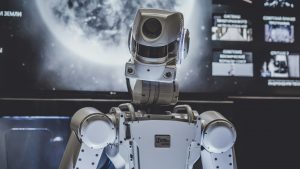Hangzhou-based Unitree Robotics has just sent shockwaves through the industry with the launch of its revolutionary humanoid robot, the R1. Priced at an astonishingly competitive $5,900, the machine is poised to completely upend the market. Designed for applications in sports, research, and demonstrations, the R1 boasts remarkable physical capabilities that were, until now, reserved for models costing many times more. Unitree’s aggressive pricing strategy is putting immense pressure on its American and European competitors, who are now scrambling to find a way to compete in this new, low-cost landscape.
The Widening Trans-Pacific Cost Gap
Unitree’s disruptive pricing places Western rivals in a difficult position. Tesla, for instance, projects that its Optimus robot will only cost less than $20,000 once it achieves a massive annual production scale of one million units. Meanwhile, Figure AI is developing its Figure 02 robot, which is currently undergoing testing at BMW with an estimated price tag of around $50,000. Experts estimate that the Digit robot from Agility Robotics, while generating revenue through a service-based model, costs approximately $250,000 to produce. In stark contrast, Unitree’s smaller and lighter R1 can perform basic locomotion and manipulation tasks for a fraction of that cost, threatening to dramatically accelerate the pace of technological development and adoption. This aggressive move also coincides with Unitree filing regulatory documents in China for an IPO this year, which could make it the first publicly traded humanoid robotics company in Asia.
An Industry Fueled by an AI Revolution
This hardware disruption is happening alongside a parallel revolution in the AI software that gives these machines their intelligence. In late June, Google unveiled Gemini Robotics, a new language model that can run locally on a robot, allowing a human operator to control its movements with natural language commands without needing an internet connection. In a demonstration, the company showcased a robot opening bags and folding clothes based on simple verbal instructions.
Google is far from alone in the race to build the brains for tomorrow’s robots. Nvidia, the AI chip giant, is collaborating with robotics specialists like Boston Dynamics to create foundational models specifically for humanoid robots. The startup Hugging Face recently released two of its own anthropomorphic robots and an AI model for developers so efficient it can run on a standard Mac. And proving the push toward mass production, Tesla has announced plans to manufacture 5,000 of its Optimus robots this year. Everywhere you look, AI is no longer just confined to the world of algorithms; it is now being embodied in silicon and steel.
What Truly Defines a ‘Humanoid’ Robot?
As its name suggests, humanoid robotics refers to robots that resemble humans. However, the term is more of a broad category than a strict definition. According to Jean-Baptiste Mouret, a research director at Inria and a specialist in machine learning for robots, “It’s a question of degrees: the closer a robot gets to the form and especially the capabilities of humans, the more humanoid it is.”
He explains that an ideal humanoid robot not only matches the human form—a head with an expressive face, two arms, and two legs—but can also execute complex tasks. This requires both advanced motor skills (moving, jumping, and navigating without falling) and sophisticated cognitive abilities (understanding what is asked of it and taking appropriate action).
A Glimpse Into a $5 Trillion Future
This global push to put advanced AI into physical, human-like forms is more than just a technological race; it represents a colossal economic opportunity. According to market forecasts, the humanoid robotics industry is on a trajectory to generate a staggering $5 trillion in revenue by 2050, signaling a fundamental shift in both labor and technology.










More Stories
Indonesia Sets New Coal Benchmark Price at $100.97 per Ton for Early June 2025
US Auto Dealers Face Pressure as Tariff Strategy Shifts
AEye, Inc.: Innovating Vision Solutions for Autonomous Vehicles